Brooke Roberts turns brain scans into knitwear patterns
Cardiac radiographer and designer Brooke Roberts has used digital knitting technology to create garments with patterns based on MRI brain scans and medical imagery (+ interview).
London-based Brooke Roberts meshed images of brain segments captured during medical scans with the drawings of Dutch artist MC Escher to create her current collection of women's knitwear.
Made from merino wool and "sports-tech composite yarns", the range includes three short dresses as well as skirts and sweaters in a colour palette of greys, mustard and purple – all created using a digital knitting machine.
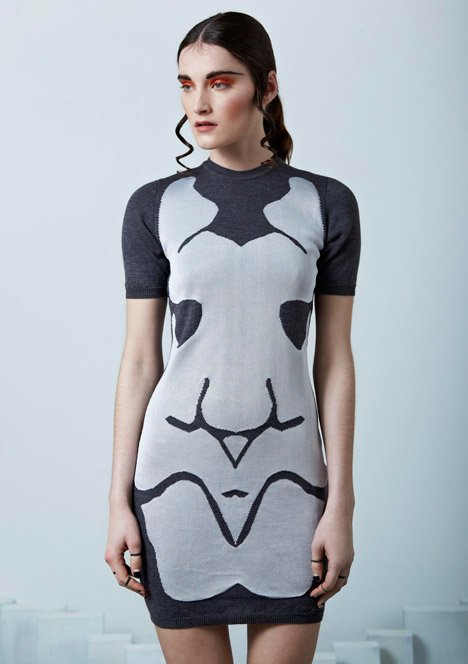
Although she runs her own fashion label, Roberts also works as a radiologist – a job that involves capturing images of the inside of the human body using X-rays and scanning machines, providing her with a continual source of visual stimulation.
The collection is part of her ongoing experiment in combining science, technology and fashion, melding scans with other imagery and fabrics.
Each design begins with a medical picture, sourced from friends or through wider research. These are combined with textured textiles and other images to create "hybrid artworks".
"Mostly I combine the scans with other concepts and that's what takes them in a new direction," Roberts told Dezeen. "For example a magnetic resonance imaging (MRI) brain scan segment can be isolated and tessellated to look like an image that is mathematical and rhythmic."
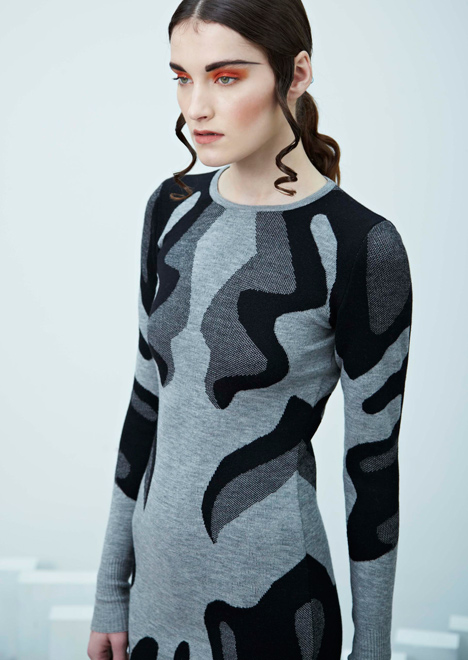
"Most brains look very similar. However the imaging modalities show different structures to varying degrees and the software we use allows us to change the image parameters in post-processing so we can play with the aesthetics of images," she explained.
"I have done this with computerised tomography (CT) brain and sinus scan images that my friends have given me. It allows me to reinterpret the images and highlight aspects I find interesting in order to use them for knit designs."
Roberts then develops bespoke fabrics for each season, selecting a combination of different natural and man-made yarns to create varying weights and effects then testing each one on a digital knitting machine.
Once this is done, she sketches the silhouettes of the garments and assigns the artworks to them before creating knitted prototypes. These prototypes are used as templates to create specification sheets, which are programmed into a knitting machine to produce the final collection.
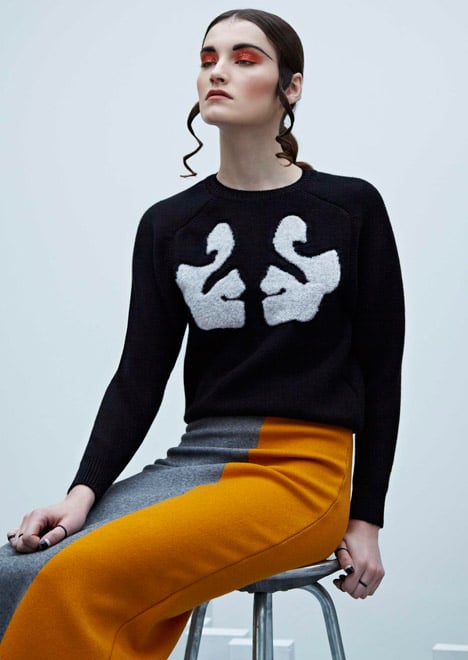
Roberts initially moved to London from Australia to study fashion at Central Saint Martins art school, after realising her career as a radiologist wasn't satisfying her creatively.
"It wasn't until I started my own label that I developed an interest in the capabilities of digital knitting machines and the potential to combine my two careers as a radiographer and designer," she told Dezeen. "The possibilities of knit are infinite and as a technical person with a love of science this was a perfect niche for me."
"I hope to expand into interiors in the near future; knitted brain scan room dividers – who wouldn't want one?!" she said.
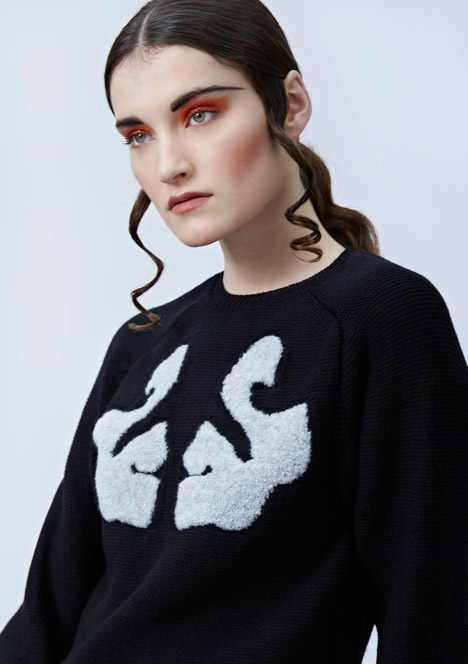
Roberts sells her work online through her own e-shop and is stocked by boutiques including Browns. Roberts said that the internet was enabling a new generation of designers to create businesses outside of the traditional fashion cycle.
"Fashion, for all its discussions about being innovative and ever-evolving, is often very inward looking and technologically dated," she said.
"One of the greatest enablers technology has afforded to fashion is the option of young emerging designers to create relatively inexpensive e-commerce stores and build an online community to whom they can sell their products and generate interest through social media. As a result there are many new fashion business models emerging and the traditional wholesale model is no longer the only option for growing a fashion business."
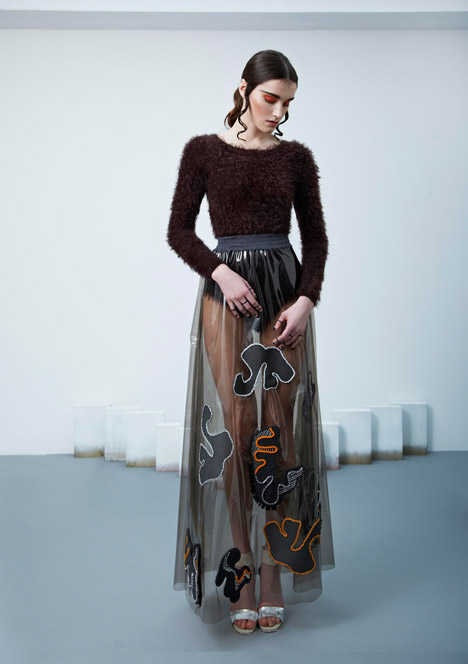
Read the transcript from our interview with Brooke Roberts:
Tamlin Magee: How did you get started using these methods?
Brooke Roberts: I worked in a knitwear factory in Italy after graduating from Central Saint Martins. I worked for a knitwear designer for three years. I was focused on the cutting and construction then and it wasn't until I started my own label that I developed an interest in the capabilities of digital knitting machines and the potential to combine my two careers as a radiographer and designer. The possibilities of knit are infinite and as a technical person with a love of science this was a perfect niche for me.
Tamlin Magee: I read that you are a cardiac radiography specialist by day – how much does this inform the design process?
Brooke Roberts: It is very important to my design process. It provides constant inspiration because the technology in cardiac imaging is advancing rapidly. The images themselves are inspiring and thought-provoking. I feel privileged to have the opportunity to see inside the body and analyse human anatomy every day. It challenges me to think about concepts of symmetry and beauty and explore organic shapes. The naturally occurring beauty inside the body is fascinating. It's also inspiring to see patients react to the images of their own heart. It's remarkable what science and medicine have enabled us to do.
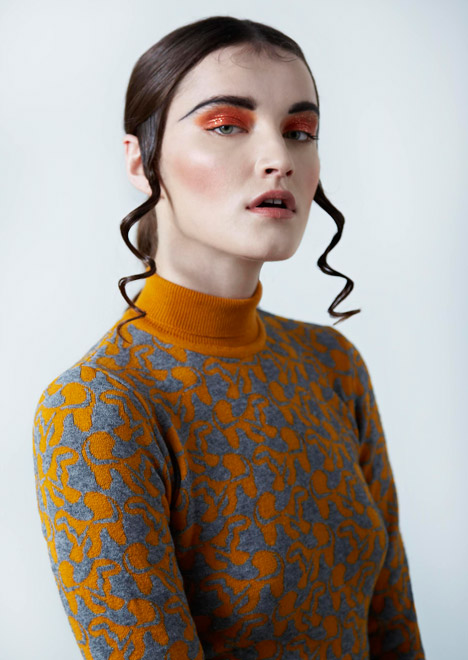
Tamlin Magee: Some of the designs look quite abstracted from their source material, how do you decide which direction to take the scans for the designs?
Brooke Roberts: Mostly I combine the scans with other concepts and that's what takes them in a new direction. For example an MRI brain scan segment can be isolated and tessellated to look like an image that is mathematical and rhythmic. I did this for my AW14 collection. It combined the work of MC Escher with brain scan segments.
Tamlin Magee: What's the degree of individuality and uniqueness in each scan?
Brooke Roberts: There's not a great deal of uniqueness in images, generally speaking. There are what we call normal variations that present less frequently but are not of physical importance. Most brains look very similar, for example. However the imaging modalities show different structures to varying degrees and the software we use allows us to change the image parameters in post-processing so we can play with the aesthetics of images. I have done this with CT brain and sinus scan images that my friends have given me. It allows me to reinterpret the images and highlight aspects I find interesting in order to use them for knit designs.
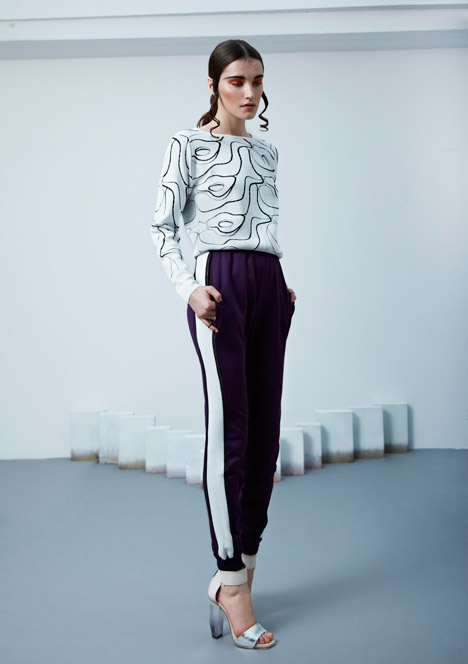
Tamlin Magee: What is it about body scans that appeals to you?
Brooke Roberts: I can't really pinpoint the reason they appeal to me. I am fascinated by the structures and they look beautiful to me. I see shapes and patterns in them that I think are very attractive – they look designed and deliberate. They are perfect in look and in most cases function. I am a total believer in evolution, so this is not a creationist perspective. I just find body scans to be the most inspiring images I have ever seen and exploring them is what I enjoy most about designing.
Tamlin Magee: How has the response been to your garments – is there commercial interest?
Brooke Roberts: The response has been great. I have had the opportunity to give a TED talk about my designs, to present at the Wired Next Generation Conference in London and to present at London Fashion Week. There is a commercial interest and I have an e-store and run private sales events for my clients who span many sectors but are mostly working in Technology, Media, Medicine and Engineering. I hope to expand into interiors in the near future; knitted brain scan room dividers – who wouldn’t want one?!
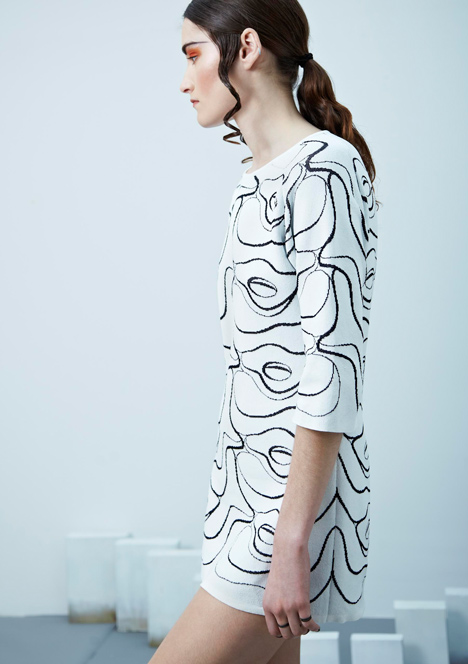
Tamlin Magee: How is fashion adapting to new technologies?
Brooke Roberts: Fashion, for all its discussions about being innovative and ever-evolving, is often very inward looking and technologically dated. For fashion to truly evolve and develop smarter, faster, greener supply chains and products it needs to enable itself technologically.
I cannot believe it still works in fixed seasons where products are shown by luxury fashion houses six months before they are due to be sold, yet ripped-off by high street retailers who have them in-store just weeks later. Summer collections are in store in mid-winter because of the seasonal fashion cycles.
One of the greatest enablers technology has afforded to fashion is the option of young emerging designers to create relatively inexpensive e-commerce stores and build an online community to whom they can sell their products and generate interest through social media. As a result there are many new fashion business models emerging and the traditional wholesale model is no longer the only option for growing a fashion business.